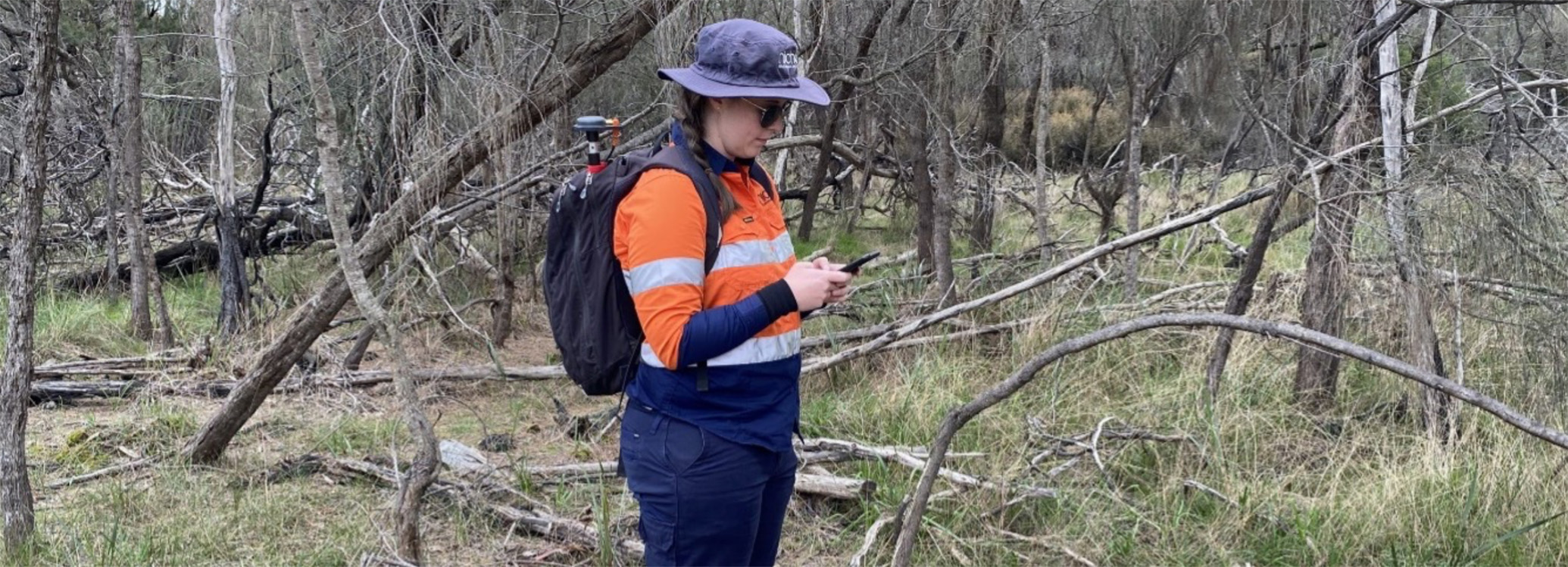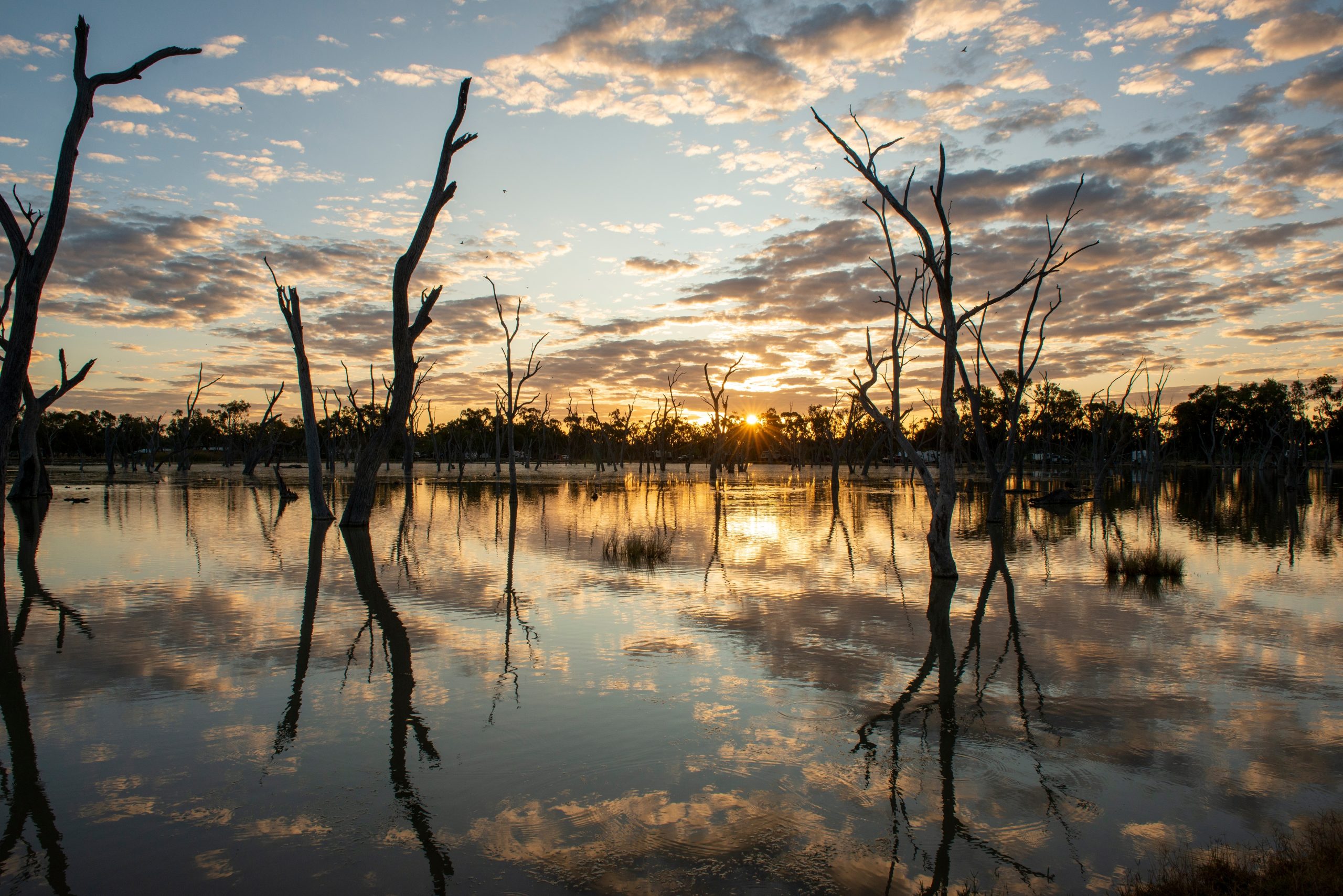What is a Cultural Heritage Management Plan (CHMP) and does your project require one?
Authors: Dr Justin Shiner, Heritage Manager and Rochelle Bensted, Senior Associate – Heritage
August 11, 2023

News & Insights
Navigating the intricate requirements of State and Federal government laws
Preserving our rich cultural heritage for future generations is responsibility we all share. At Niche, we offer comprehensive heritage management services to help our clients navigate the intricate requirements of State and Federal government laws, ensure compliance while looking beyond regulations to find solutions that benefit communities.
Dr Justin Shiner, Heritage Manager and Rochelle Benstead, Senior Associate Heritage, explain Victoria’s CHMP regulations and how they apply to projects…
What exactly is a Cultural Heritage Management Plan?
A Cultural Heritage Management Plan (CHMP) is the principal approval mechanism in Victoria for activities that have the potential to harm Aboriginal cultural heritage. A CHMP is a legally binding document which details the results of an archaeological assessment undertaken for an area of works and includes conditions for the management of Aboriginal cultural heritage before, during and after the proposed activity. CHMPs are prepared in consultation with the relevant Registered Aboriginal Party (RAP) or Traditional Owners of the area.
When is a CHMP required in Victoria?
Understanding when a CHMP is necessary can sometimes be challenging. However, our expert team at Niche is here to help. A mandatory CHMP is required if:
- A high impact activity is proposed to be undertaken within an area of cultural heritage sensitivity, as defined in the Aboriginal Heritage Regulations 2018, or
- Your project requires an Environmental Effects Statement, impact management plan, or comprehensive impact statement for approval. Your project requires an Environmental Effects Statement, impact management plan, or comprehensive impact statement for approval.
What are high impact activities?
High impact activities are works of substantial scope considered to have the potential to harm Aboriginal cultural heritage. Victoria’s Aboriginal Heritage Regulations 2018 outline activities under the following criteria as high impact activities:
- Buildings and works for specified uses some of which include a car park, childcare centre, education centre, hospital, industry, minor and major sports and recreation facilities, office, place of assembly, residential building and village, retail premises, utility installation, and warehouse
- Constructing specified items of infrastructure e.g., an airfield, a bicycle or walking track with a length exceeding 500m, a helipad, certain rail infrastructure, a roadway exceeding 100m and an underground telecommunications line exceeding 500m
- Dwellings (three or more)
- Subdivision of land
- Alpine resorts
- Activities requiring earth resource authorisations
- Extraction or removal of stone
- Extraction or removal of sand or sandstone
- Stone exploration
- Extraction or removal of loose stone on agricultural land on Victorian Volcanic Plain
- Timber production
- Dams
- Specific uses of land e.g., where a statutory authorisation is required to change the use of the land
What are areas of cultural heritage sensitivity?
Areas of cultural heritage sensitivity are landforms and locations where there is an increased likelihood for Aboriginal cultural heritage materials and values to be present. The Victorian Aboriginal Heritage Regulations define several landforms and geological formations as areas of cultural heritage sensitivity, including, but not limited to:
- Land within 200m of a waterway or prior waterway
- Land within 200m of coastal waters
- Caves
- Sand sheets identified as “Qd1” and “Qxr” in the Surface Geology of Victoria 1:250 000 map book
- Stony rises identified as “Neo2” in the Surface Geology of Victoria 1:250 000 map book, and associated with the Mt Eccles, Mt Napier and Mt Rouse lava flows
- The Koo Wee Rup Plain identified as “Qg” and “Qm1” in the Surface Geology of Victoria 1:250 000 map book
- Registered Aboriginal places and land within 50m of a registered Aboriginal place
Determining when a CHMP is required
Whether a CHMP is required or not can be difficult to determine. Niche can help you to understand what level of cultural heritage approval your activity will require.
In certain circumstances where prior significant ground disturbance can be demonstrated a CHMP will not be required. Victoria’s Aboriginal Heritage Regulations 2018 define Significant Ground Disturbance as:
The disturbance of— (a) the topsoil or surface rock layer of the ground; or (b) a waterway— by machinery in the course of grading, excavating, digging, dredging or deep ripping, but does not include ploughing other than deep ripping.
At Niche we begin by determining whether your activity triggers the requirement for a mandatory CHMP. This includes assessing the likelihood that the activity area may have been subject to prior significant ground disturbance. If there is a strong case that the activity area has been subject to prior significant ground disturbance, then either a Cultural Heritage Due Diligence Assessment or Preliminary Aboriginal Heritage Test (PAHT) can be prepared to satisfy heritage assessment requirements.
Not all activities require CHMPs
It’s important to note that not all activities require CHMPs. The Aboriginal Heritage Regulations 2018 provide a list of exempt activities. If you are uncertain about whether your project falls into this category, our knowledgeable team can guide you through the regulations and help you determine the appropriate steps to take.
Expert heritage advice across eastern Australia
At Niche we assess the uniqueness of each proposed development to provide our clients with the best possible advice on how to comply with cultural heritage management requirements. We are happy to assess any prospective development proposal and to provide clear direction on the next steps. Should a CHMP be required, we have a team of Heritage Advisors experienced in the preparation of CHMPs ranging from small developments through to large residential infrastructure and renewables projects. Our heritage team works throughout eastern Australia from our locations in New South Wales, Queensland, and Victoria, offering expert advice and solutions responding to the specific requirements of each jurisdiction.
We pride ourselves on maintaining strong relationships with our clients, the regulators and Aboriginal communities and we strive for excellence through best practice and offer value by achieving legislatively compliant solutions that address cultural heritage requirements while benefiting our communities.
About the authors
Dr Justin Shiner is a highly knowledgeable and well-respected cultural heritage professional with extensive project experience across most jurisdictions in Australia. He has managed a wide range of large and complex Indigenous and historic cultural heritage projects and has considerable cultural heritage experience within the mining industry both within Australia and internationally in Mongolia, Namibia and Peru.
Justin has carried out and directed large multi-disciplinary archaeological research projects in NSW and QLD and has widely published the results of this research. Recently, Justin has undertaken an international review of cultural heritage practice at Glencore’s global sites and currently advises Glencore on a greenfields mine development on Cape York Peninsula.
Justin is a fully qualified ‘heritage advisor’ meeting all the requirements of the Victorian Aboriginal Heritage Act 2006.
Rochelle Bensted has over five years’ experience as a cultural heritage advisor and archaeologist. Primarily operating in Victoria and NSW, she has managed and authored Cultural Heritage Management Plans, Aboriginal Cultural Heritage Assessments, historic heritage impact assessments, and other cultural heritage assessments. She has extensive project management experience, managing multifaceted projects concurrently with a focus on delivering quality outcomes for proponents and Indigenous stakeholders.
She has successfully managed a wide range of infrastructure and development projects, and undertaken archaeological surveys and excavations across various environments, with field experience in Victoria and NSW in Australia and internationally in Ireland.
Get to know Rochelle: Meet the team: Rochelle Benstead, Senior Associate Heritage – VIC
Find out more
- Heritage management
- Contact us to discuss your project
- Culture & Careers
- About Niche
- Latest news
- Projects
Follow us
Excellence in your environment



